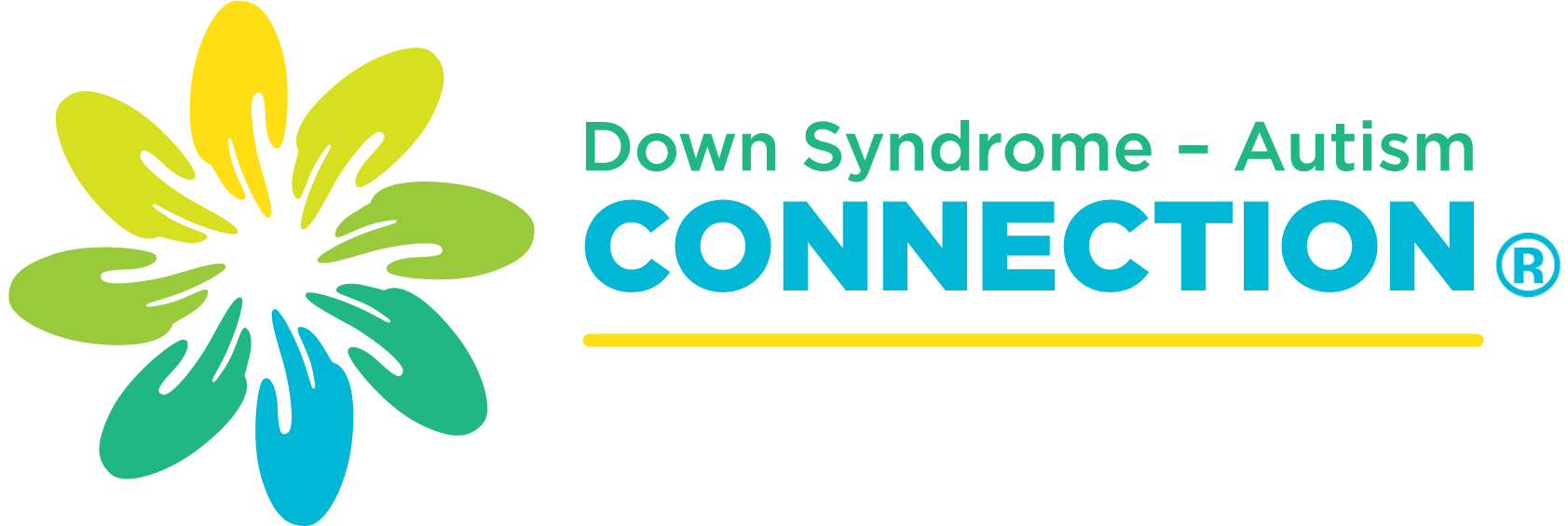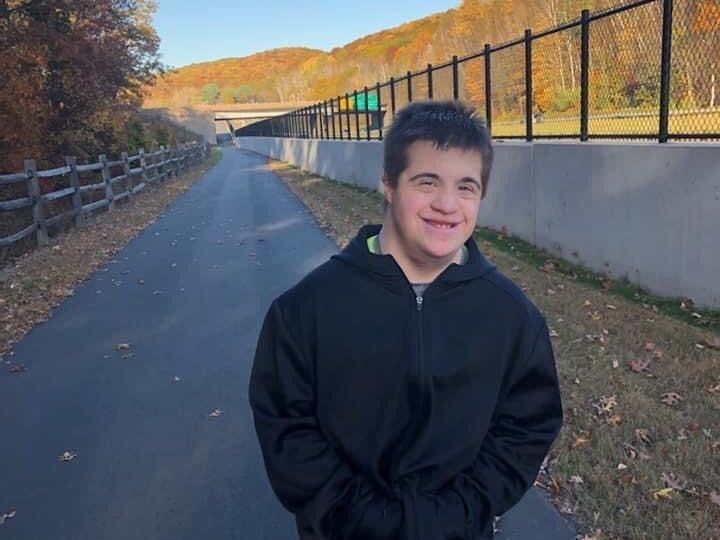Autism-like Behaviors in Children with Down Syndrome – Frequent Questions
By George T. Capone, M.D.
Director, Down Syndrome Clinic and Research Center, Medical Director, Pediatric Feeding Disorders Program
Kennedy Krieger Institute
- Does ASD occur more often in people with DS compared to the general population?
- How is ASD diagnosed in children with DS?
- Can autism-like behaviors be confused with other disorders?
- What signs would you think that ASD is possible?
- Who should make the diagnosis?
- If a dual diagnosis of ASD is suspected, what should a parent do?
- What can someone expect from an evaluation process?
- Is it beneficial to have an official dual diagnosis of ASD?
- Are there medications that can help with autism-like behaviors or ASD?
-
Does ASD occur more often in people with DS compared to the general population?
Estimating the prevalence or occurrence of ASD among children and adults with Down syndrome is difficult. This is partly due to disagreement about diagnostic criteria and incomplete documentation of cases over the years. Currently, estimates vary between 1 and 10%. This is substantially higher than is seen in the general population (.04%) and less than other groups of children with intellectual disability (20%). In addition, the male-to-female ratio is much higher than the ratio seen for autism in the general population.
-
How is ASD diagnosed in children with DS?
A diagnosis is usually made through direct observation and by understanding a particular child’s developmental-behavioral trajectory over time. To establish the diagnosis of ASD each of the three “core-features” of ASD must be present to such a degree that it results in “functional impairment”.
Commonly agreed upon core features of ASD include:
- Impairment in relating to people in social circumstances (social-disinterest, poor eye-contact, anxiety, social avoidance, or withdrawal)
- Impairment in communication (initiating or understanding spoken words, signs and/or gestures; lack of imaginative play)
- Repetitive body movements and/or a persistent pattern of repetitive or ritualistic behavior. A person’s focus of these activities is usually intense.
-
Can autism-like behaviors be confused with other disorders?
Yes, diagnostic confusion is common for several reasons:
First, the diagnosis of ASD may be overlooked or thought by some professionals to be inappropriate for a child with DS and intellectual disability. Second, only certain aspects of the ASD symptom-complex may be recognized. For instance, if a child has a high degree of hyperactivity and impulsivity only a diagnosis of ADHS may be considered. Third, some of the behaviors are seen in other childhood disorders which DO NOT QUALIFY for the diagnosis of ASD.Frequently confused with ASD but DO NOT QUALIFY for an ASD diagnosis:
Children with ADHD, sensory dysfunction, and disruptive behaviors who are difficult to manage may appear to have ASD. Some children with obsessive-compulsive features look similar to ASD (dependence upon routines, need for sameness, perseveration on certain fixed themes). These conditions DO NOT QUALIFY for ASD when social and communication skills are relatively intact. -
What signs would you think that ASD is possible?
Early Presentation (< 3 years):
Some of the behaviors often seen prior to 2-3 years of age include:- Repetitive motor behaviors (body rocking, excessive mouthing of objects or fingers, frequent hand, or finger waving)
- Light head banging or self-hitting
- Fascination with and staring at lights or ceiling fans
- Episodic deviation of eye gaze (seizures may be suspected)
- Extreme food refusal (especially high textured foods)
- Unusual play with toys and other objects (repetitive spinning, banging, waving)
- Receptive language impairment (limited understanding of words or may act as if deaf)
- Absent speech; and no interest in gestures or signs
Another group of children are older when symptoms manifest.
Other behaviors commonly seen in this group include:- History of developmental regression (loss of speech, language, play or social skills)
- Extreme irritability
- Underactivity, apathy, loss of motivation and poor organization
- Hyperactivity, short attention, impulsivity, and poor organization
- Unusual vocalizations (tongue-lip sucking, humming, grunting or other throaty noises)
- Sensory aversions (to crowded rooms, sudden sounds or being touched)
- Difficulty with changes in routine or when entering unfamiliar surroundings may result in extreme non-compliance, anxiety, fearfulness or agitation
- Sleep disturbances (frequent awakenings or decreased need for sleep)
- Disruptive behaviors (yelling, throwing objects or physical aggression)
- Self-injurious behavior (skin picking, scratching, or biting, head hitting or banging)
-
Who should make the diagnosis?
The diagnosis can usually be established by a developmental-behavioral pediatrician, child psychiatrist or child psychologist. More important than specific credentials, it is critical that the evaluator be experienced in assessing children with intellectual disabilities.
-
If a dual diagnosis of ASD is suspected, what should a parent do?
Speak with your child’s primary care physician and seek a referral to a knowledgeable professional who can help guide you. If a diagnosis of ASD is confirmed, you may wish to discuss possible treatment options with each of the different professionals you choose to consult. Work with professionals who will help you to understand, evaluate and prioritize your various options, and who are not overtly critical or threatened by your attempts to design a program that is best for your child.
-
What can someone expect from an evaluation process?
A comprehensive evaluation should consist of taking a medical & developmental history; observation of the child in both structured and unstructured social or play settings; and a systematic rating of autistic behaviors according to one or more validated autism rating scales or checklists. Formal cognitive and language testing are often useful in helping to support the diagnosis of ASD. It is also important to determine if the child has an unidentified medical condition (clinical seizures, vision or hearing impairment).
-
Is it beneficial to have an official dual diagnosis of ASD?
Yes, because in almost all cases, ASD (not Down syndrome/intellectual disability) is the more functionally impairing developmental disorder. ASD in the setting of Intellectual disability needs to be a recognized dual diagnosis when creating a meaningful educational treatment plan. A diagnosis of ASD could entitle your child to more specialized educational and intervention services.
-
Are there medications that can help with autism-like behaviors or ASD?
Perhaps. When deciding whether or not to attempt a medication trial consider a number of factors such as:
- The severity and duration of symptoms
- The degree to which the physiological symptoms or behaviors interfere with developmental, academic progress or social skill development, and their impact on family-social relationships.
- The direct impact of dangerous behaviors (aggression, self-injury) on the health and safety of the individual and caretakers.
While there is no cure or remarkably effective treatment for Down syndrome and autistic spectrum, certain “target behaviors” may be responsive to medication. Some of these behaviors include:
- Hyperactivity and poor attention
- Irritability and anxiety
- Sleep disturbance
- Explosive behaviors resulting in aggression/disruption (can sometimes be reduced)
- Rituals and repetitive behaviors (can sometimes be reduced)
- Self-injury (can sometimes be reduced)
Even when medications are used, having a solid behavior management plan and functional communication strategy in place are essential to ensure the greatest chance for success. This often requires establishing a team of teachers, therapists, and interventionists around the child in the school, home, and community.

